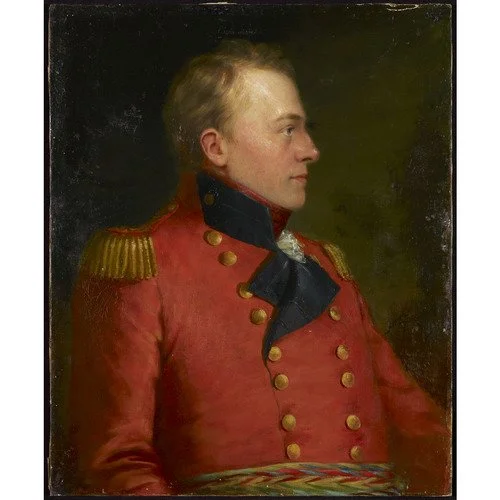General Brock: The Eternal Sentinel of the Niagara Frontier
General Brock stating south towards Lewiston, NY.
Why Is That Statue Staring at Us?
A View from Lewiston – and a Warning from History
If you’ve ever stood in Lewiston, New York, and looked across the gorge, you’ve seen it—Brock’s Monument rising out of the Canadian cliffs like a sentinel carved in stone. But it’s not just a landmark. It’s a message. General Isaac Brock is staring straight at you. And there’s a reason for that.
On the morning of October 13, 1812, this peaceful river was a war zone. American troops crossed from Lewiston, hoping to capture the village of Queenston and gain a foothold in Canada. It was a bold move—if they took Queenston, they’d cut off critical supply lines to the rest of Upper Canada.
They landed in the dark, between 3:00 and 5:00 a.m., slipping across in boats. By dawn, they had seized the Heights. General Brock, understanding the danger, didn’t wait. He rode into town, rallied a small force, and led a charge up the escarpment to retake the redan battery. Under intense enemy fire, he pushed forward—until he was shot through the chest. He collapsed within feet of his men.
Image of General Brock.
Even after his death, the fight raged on. His aide-de-camp, John Macdonell, led another charge but was also mortally wounded. Then came Indigenous warriors under John Norton, attacking from the woods and holding the Americans in place. By afternoon, reinforcements arrived from Fort George. British regulars, Canadian militia, and Runchey’s Corps stormed the Heights. The Americans surrendered—1,000 taken prisoner. It was a decisive British victory, but it came at a heavy price: the life of Brock himself.
His body was hidden during the chaos, but twelve years later, in 1824, it was moved in a massive procession—over 8,000 people watched as he was laid to rest beneath a new monument at Queenston Heights. That first tower stood 40 meters tall and quickly became a tourist destination. But in 1840, it was bombed—an act of political violence suspected to be carried out by an American sympathizer. The explosion only strengthened Canadian resolve.
A second, taller monument was built in 1853, this one made entirely of Queenston limestone. It stands 56 meters tall and looms above the gorge like a defiant symbol. From Lewiston, you can feel it watching.
And just a few miles downriver, the Battle of Lundy’s Lane echoed the same bloody chaos. In 1814, British and American forces collided near the roar of the Falls in one of the bloodiest battles ever fought on Canadian soil. The air was thick with smoke. The fighting continued into the night. Neither side truly won—but the cost was devastating.
Painting of the Battle of Queenston Heights.
At Niagara Tours, we don’t just pass by this history—we bring it to life. When you look across that gorge and see Brock’s eyes on you, remember: that’s not just a statue. It’s a man who died right there, defending his country. It’s a nation that rose in the wake of war. It’s a warning. A story. A legacy.
Come stand where it happened. Come see why he’s still watching.
Another image of the monument.




